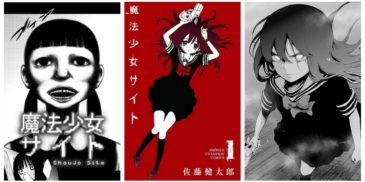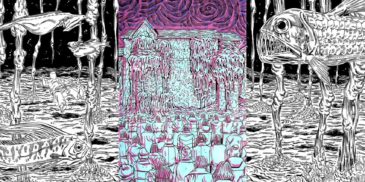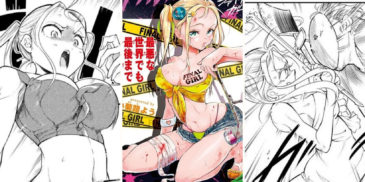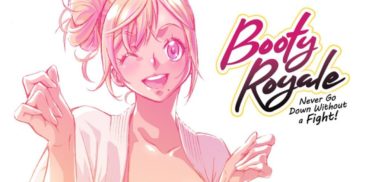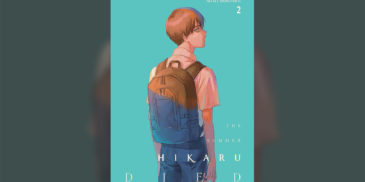
At the tender age of four, Kanako Inuki was handed a shiny new five-yen coin. Promising the same allowance each month, her mother took her to a bookstore and let her choose a manga magazine. Inuki considered a series by Masako Watanabe, but the pull of Kazuo Umezz proved impossible to resist. Despite scaring easily, Inuki found herself drawn to horror, loving ghost stories, and scary movies. In addition to Umezz’s comics, Inuki was captivated by Moto Hagio’s seminal shōjo series The Poe Clan (1972-76) and Osamu Tezuka’s Phoenix (1954-1988). Her aspiration to be a manga artist waned somewhat when she left school, but she began drawing again as a hobby. She finally debuted in 1987, when her story Orusuban was selected by Kazuo Umezz himself for publication.
Last year, Kodansha USA released the English edition of Be Very Afraid of Kanako Inuki!, which collects six of the mangaka’s stories. Translated by Kevin Gifford, the book reintroduces Inuki’s work to English-speaking manga fans. Previously, Dark Horse released School Zone in 2006, and CMX (the now-defunct DC Comics imprint) released Presents the following year. Both three-volume series are now out of print, making this the easiest way to experience Inuki’s work. Until fairly recently, the English-speaking horror manga scene had been dominated by Junji Itō; Be Very Afraid of Kanako Inuki! takes another step towards rectifying that.
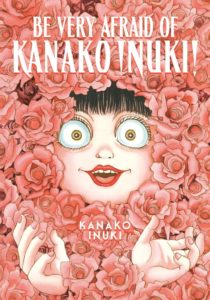
Kodansha’s release selects one story from six of Inuki’s series: ‘The Birthday Present’ from Presents; ‘Lolita’ from Bukita-kun; ‘The Sasori Doll’ from Big Sis Sasori; ‘Lovesickness’ from The Haunted Examination Room; ‘Happiness Hidden in the Dark’ from Fulfilled Wishes; and ‘Friends at the Smiling Gate’ from The Mysterious Tatari-chan. These are standalone stories but, read independently of their respective series, context is of course lacking. While the stories are varied, the themes are consistent. Like Umezz, Inuki explores childhood fears and trauma, and she is not afraid to laugh in the face of them. At times, the work is outright pastiche. Events are exaggerated to absurd degrees, and familiar tropes and twists (one lifted directly from an episode of The Twilight Zone) reveal a deep understanding of and love of the genre.
This understanding informs Inuki’s characters. She knows that women and girls can be just as vicious as men, if not more. While men and boys’ implied and explicit ill intentions colour many of the stories, it is the girls’ brutality that shapes and defines Inuki’s brand of horror. Inuki’s girls revel in frills and patterned dresses as much as they delight in cruelty. They force us to redefine ‘cute’; affixed to China-doll faces are bulging amphibious eyes and leering grins. ‘The Sasori Doll’ (which Inuki calls a “tale of sisterly love”) concerns the titular Big Sis Sasori tormenting her younger sister. ‘Friends at the Smiling Gate’ and ‘The Birthday Present’ explore the impact and possible consequences of girl-on-girl bullying.
Perhaps most thematically and aesthetically distinct is ‘Happiness Hidden in the Dark’. A dark fairy-tale of sorts, it follows a blind princess who wishes for sight. Inuki builds her world beautifully: kind hands emerge from the darkness; unknown sounds burst around her; and the ornate palace forms as she explores. Despite the familiar twist, the story is powerfully resonant. Meanwhile, the Bukita-kun story ‘Lolita’ features an abused, precocious five-year-old pursuing romantic relationships with teenage boys. Bukita-kun does not reject her advances, finding a way to age her body, but not her mind. The story veers wildly into supernatural territory, and away from too nasty an implication about Bukita-kun (who, it is not mentioned, is actually a zombie). Predatory men are represented by Dr Kanawa in ‘Lovesickness’, whose character file twice mentions an interest in “young girls”.
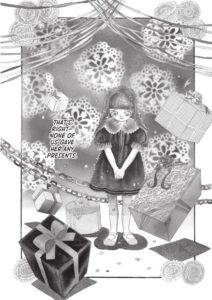
Replete with a character index, author’s notes, an interview from 1997, and a strikingly gorgeous, tactile cover, Be Very Afraid of Kanako Inuki! is a beautifully presented release. Inuki’s darkly comic and often parodic horror stories explore aging, bullying, and childhood trauma, leaving room for shocking and inventive moments of supernatural body horror. Currently, the easiest and cheapest way for English-speaking manga fans to experience Inuki’s work, the book would make a fine addition to any horror fan’s collection. In the Western World, Junji Itō still holds many in his thrall, but other male mangaka (like Umezz and Hideshi Hino) are joining him. It is, therefore, promising that Inuki’s work has received such fine treatment from Kodansha.
Be Very Afraid of Kanako Inuki! is available now from Kodansha USA.
More Manga Reviews
At some point in history, the magical girl genre existed as the pinnacle of wholesomeness. Yet, Madoka Magica became a staple as the deconstruction of it. At this time, it… Pygmalion is a gory horror manga consisting of three volumes released in 2015 and concluding in 2017, written and illustrated by Chihiro Watanabe. Watanabe is known as the creator of… Soil is a title I have been familiar with for some time, existing as a cult title that had yet to be published in English. Consequently, I had been tempted… I believe we are all aware of the stereotypes of certain genres in horror, specifically slasher movies. The near formulaic structure of their story is a carbon copy of the… Life is hard for an aspiring pop idol who can’t hold a tune, so thankfully Misora Haebaru has two massive assets that give her a leg up on the competition;… The Summer Hikaru Died is an ongoing horror manga (currently at 4 volumes), written and illustrated by Mokumokuren. This is the second volume of the manga to be released in…Magical Girl Site (2013) Manga Review: It’s Not Madoka and That’s Completely Okay
Pygmalion (2015) Manga Review – It’s All Greek To Me
Soil Manga Review – Tainted Ground Invites Cosmic Horror
Final Girl Manga Review – A Slasher Parody
Booty Royale: Never Go Down Without a Fight! (NSFW) Manga Review – Battle With Your Best Assets Forward
The Summer Hikaru Died Volume 2 Manga Review
Isabelle is a writer from the UK who enjoys alternative manga and horror films. When not writing, you can probably find Isabelle buying books or obsessing over Martin and Lewis.
